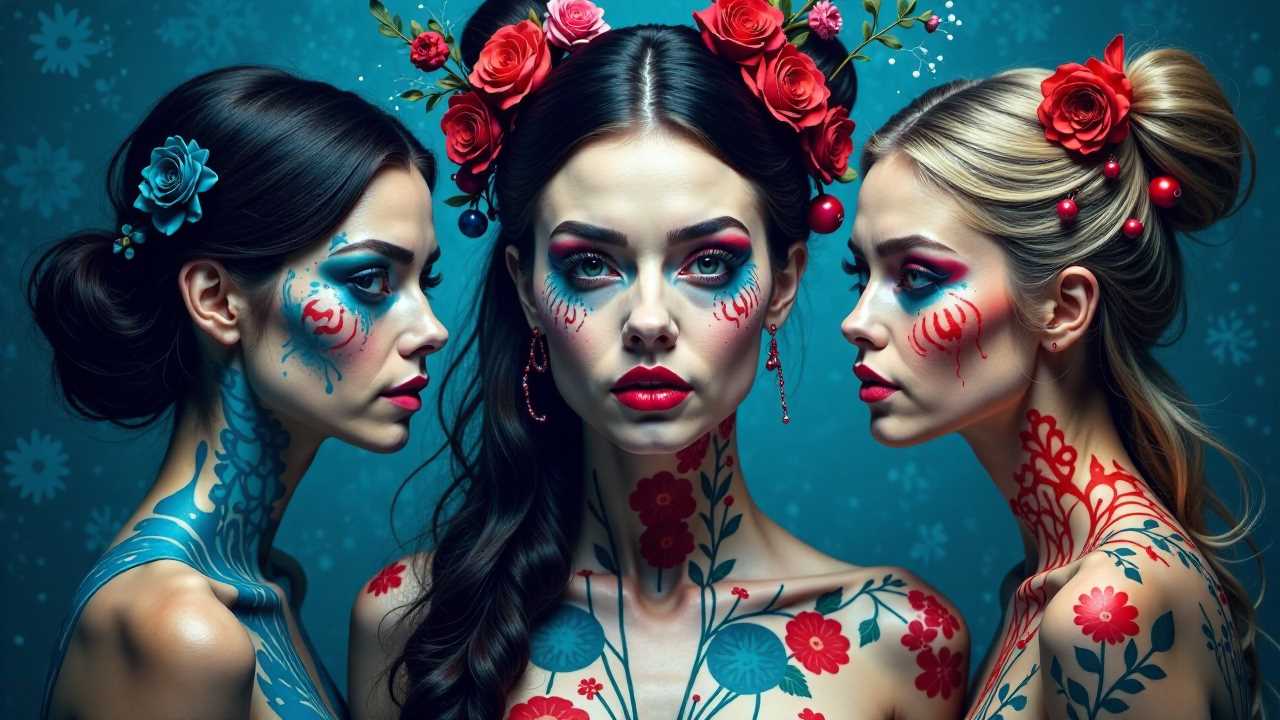
The Role of Special Effects Makeup Artists in Hollywood
Special effects makeup artists play a pivotal role in the Hollywood film industry, transforming the ordinary into the extraordinary. These talented individuals possess a unique skill set that combines artistry, technical knowledge, and creativity. They are responsible for creating stunning visual transformations that bring characters to life, whether through realistic aging, injury simulation, or fantastical creature design. Their work is essential in crafting the visual narrative of a film, allowing audiences to suspend disbelief and immerse themselves in the story.
Understanding the Craft of Makeup Artistry
Makeup artistry is not merely about applying cosmetics; it is an intricate craft that requires a deep understanding of human anatomy, color theory, and artistic techniques. Special effects makeup artists utilize a variety of materials, including prosthetics, latex, and silicone, to create lifelike effects. Mastery of these materials allows them to sculpt, mold, and paint elaborate designs that can withstand the rigors of filming and the scrutiny of the camera.
The process begins with a thorough consultation with directors and producers to understand the vision for the characters. Artists often create sketches and prototypes to ensure that their designs align with the film's aesthetic. This collaborative approach is crucial in the film industry, where every detail matters in conveying the intended message.
The Magic of Prosthetics in Special Effects Makeup
Prosthetics are a cornerstone of special effects makeup, enabling artists to create dramatic transformations. From monstrous creatures to aging characters, prosthetics allow for a range of possibilities that enhance storytelling. The application of prosthetics requires precision and skill, as they must seamlessly blend with the actor's skin to create a believable effect.
The process of creating prosthetics involves several steps, including sculpting the design in clay, creating a mold, and casting the final piece in a flexible material. Once the prosthetic is ready, it is meticulously applied to the actor's face or body using specialized adhesives. The artist then adds finishing touches, such as painting and texturing, to ensure that the prosthetic looks as realistic as possible on camera.
Creature Design: Breathing Life into Imagination
Creature design is one of the most exciting aspects of special effects makeup artistry. Artists are tasked with conceptualizing and creating beings that may not exist in reality, drawing inspiration from mythology, literature, and their own imagination. This process requires not only artistic talent but also a strong understanding of anatomy and movement to ensure that the creatures appear lifelike.
In Hollywood, creature design has reached new heights, thanks in part to advancements in technology. Artists now have access to digital tools that allow them to visualize their designs in 3D before they are brought to life. This integration of traditional artistry with modern technology has revolutionized the way creatures are created for film, enabling more complex and dynamic designs.
The Intersection of Visual Effects and Makeup Artistry
The collaboration between special effects makeup artists and visual effects (VFX) teams is essential in modern filmmaking. While makeup artists create tangible effects on set, VFX artists enhance these effects in post-production. This synergy allows for a seamless blend of practical and digital effects, resulting in a more immersive viewing experience.
For instance, an actor may wear a prosthetic mask that is then digitally augmented to create additional features or movements. This combination of techniques allows filmmakers to push the boundaries of creativity, resulting in visually stunning sequences that captivate audiences.
The Future of Special Effects Makeup in the Film Industry
As technology continues to evolve, the future of special effects makeup artistry looks promising. Innovations such as 3D printing and augmented reality are beginning to play a significant role in the industry. 3D printing allows for the rapid production of intricate prosthetics, reducing the time and labor involved in traditional methods. Meanwhile, augmented reality offers new possibilities for real-time visual effects, enabling artists to see how their work interacts with digital elements during filming.
Despite these advancements, the core principles of makeup artistry remain unchanged. The ability to tell a story through visual transformation is a timeless skill that will always be in demand. As the film industry continues to grow, the need for talented special effects makeup artists will remain vital in creating the captivating characters and worlds that audiences have come to love.
The Artistry Behind the Magic
In summary, special effects makeup artists are the unsung heroes of the Hollywood film industry. Their expertise in makeup artistry, prosthetics, and creature design allows filmmakers to bring their visions to life in ways that engage and enthrall audiences. As technology advances, the artistry behind special effects makeup will continue to evolve, ensuring that the magic of cinema remains alive and well for generations to come. Whether through the application of prosthetics or the creation of fantastical creatures, these artists are essential in crafting the visual stories that define our cinematic experiences.
 SportsHollywoodLifestyleFashionHome & GardenTrendsPrivacy PolicyTerms And Conditions
SportsHollywoodLifestyleFashionHome & GardenTrendsPrivacy PolicyTerms And Conditions
